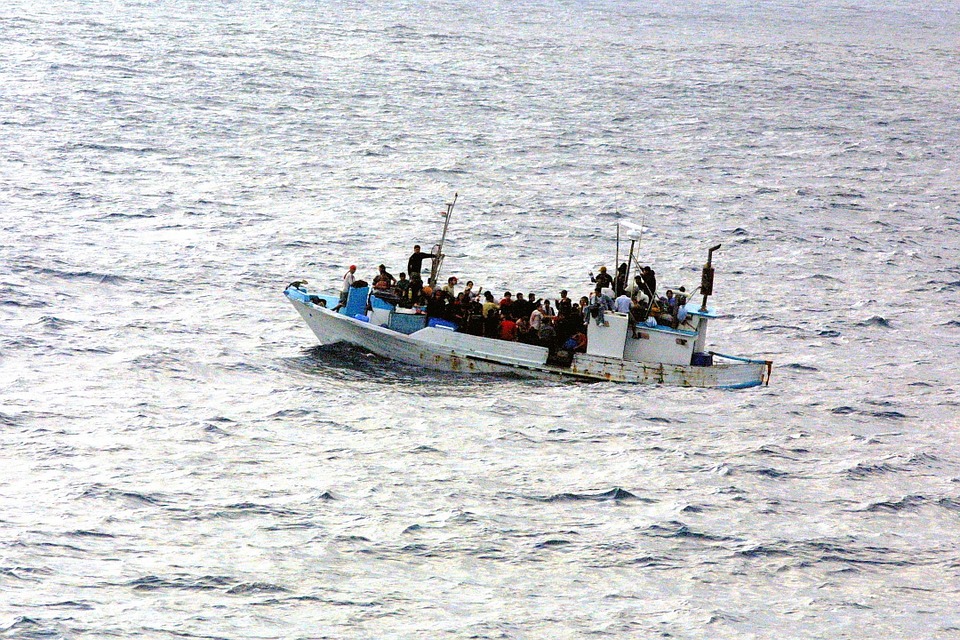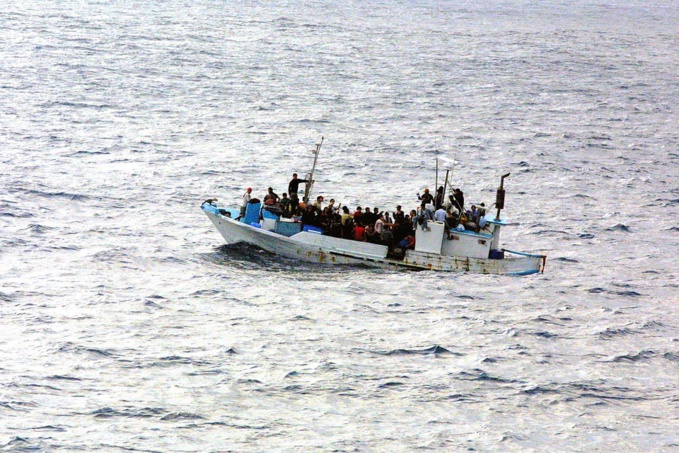Number of migrants perished or get lost in the Mediterranean Sea exceeded 3 800 people. Thus, 2016 has become the deadliest for migrants on record, according to the UN Refugees Agency’s report. The previous record was set last year, when 3771 people were lost in the sea.
"This is the worst year of all that we have seen - said William Spindler, Spokesman for UNHCR, the UN refugee agency, during a press conference in Geneva. - Last year, there was one victim for 269 people reached destination. In 2016, however, the probability jjumped to one for 88". The greatest flow to Europe was observed just last year - more than one million people crossed the Mediterranean. This year, the flow of refugees from North Africa and the Middle East (especially Syria) significantly decreased to 327.8 thousand people. Most of them are dying when sailing from Libya to Italy.
Reason for increased number of victims primarily lies in extremely low quality of ships in which refugees are sent out to sea. "Smugglers often use low-quality ships, such as inflatable boats, that cannot withstand this journey. Sometimes incidents are related to bad weather conditions", - said Mr. Spindler. He noted that refugees often simply overload the boat. There were cases, there were thousands of people on a small ship.
Closed borders and attempts to cope with migrant crisis led to the fact that tens of thousands of refugees faced daunting uncertainties. Currently, there are more than 73,500 refugees and migrants in seven countries in Europe, after only six months the EU and Turkey have signed a contract for 6 billion euros to overcome the crisis. In accordance with the agreement dated 20 March, all refugees and migrants arriving in Greece were to be deported back to Turkey, if they had not applied for asylum or their appeal was rejected. In turn, the EU agreed to accept one Syrian refugee for every man who was sent back to Turkey.
However, several countries in the region have closed their borders to migrants. Shut Western Balkan route banned refugees and migrants from getting to the Western European countries, such as Germany. Those who could not cross the Western Balkans and Hungary before the deadline, were faced with uncertainty.
According to the latest statistics published by the International Organization for Migration (IOM), the new regime, combined with closed borders along the Balkan route condemned 73,518 people to stay in Greece, Bulgaria, Serbia, Croatia, Slovenia, Hungary and Macedonia.
After the March agreement, number of refugees and migrants caught up in Greece increased by 42%, up to 60 629 as of 19 October. The same indicator in Serbia proved to be shocking - 164%, from 1706 to 4,513 for the six-month period.
As of October 19, total number of arrivals in Greece by land and sea routes amounted to 171,185. Number of stranded migrants and refugees in the country is estimated at 60,629 people. According to the Greek authorities, 7618 migrants and refugees are living in alternative placements, and 8,700 are located in reception centers in areas with large concentrations of people in unsanitary conditions. Some of them are forced to live on the street, according to the IOM.
Migrants from Afghanistan, Iraq and Pakistan usually dare to take the dangerous journey to Europe on foot or on board a sea transport. People fleeing from war and poverty in countries of the Middle East and Africa region (Syria, Nigeria, Eritrea and Sudan, for example) are often caught dangerously crowded boats, drifting between Libya and Italy. Others are found on dangerous boat voyages across the Aegean from Turkey to Greece.
source: iom.int, time.com
"This is the worst year of all that we have seen - said William Spindler, Spokesman for UNHCR, the UN refugee agency, during a press conference in Geneva. - Last year, there was one victim for 269 people reached destination. In 2016, however, the probability jjumped to one for 88". The greatest flow to Europe was observed just last year - more than one million people crossed the Mediterranean. This year, the flow of refugees from North Africa and the Middle East (especially Syria) significantly decreased to 327.8 thousand people. Most of them are dying when sailing from Libya to Italy.
Reason for increased number of victims primarily lies in extremely low quality of ships in which refugees are sent out to sea. "Smugglers often use low-quality ships, such as inflatable boats, that cannot withstand this journey. Sometimes incidents are related to bad weather conditions", - said Mr. Spindler. He noted that refugees often simply overload the boat. There were cases, there were thousands of people on a small ship.
Closed borders and attempts to cope with migrant crisis led to the fact that tens of thousands of refugees faced daunting uncertainties. Currently, there are more than 73,500 refugees and migrants in seven countries in Europe, after only six months the EU and Turkey have signed a contract for 6 billion euros to overcome the crisis. In accordance with the agreement dated 20 March, all refugees and migrants arriving in Greece were to be deported back to Turkey, if they had not applied for asylum or their appeal was rejected. In turn, the EU agreed to accept one Syrian refugee for every man who was sent back to Turkey.
However, several countries in the region have closed their borders to migrants. Shut Western Balkan route banned refugees and migrants from getting to the Western European countries, such as Germany. Those who could not cross the Western Balkans and Hungary before the deadline, were faced with uncertainty.
According to the latest statistics published by the International Organization for Migration (IOM), the new regime, combined with closed borders along the Balkan route condemned 73,518 people to stay in Greece, Bulgaria, Serbia, Croatia, Slovenia, Hungary and Macedonia.
After the March agreement, number of refugees and migrants caught up in Greece increased by 42%, up to 60 629 as of 19 October. The same indicator in Serbia proved to be shocking - 164%, from 1706 to 4,513 for the six-month period.
As of October 19, total number of arrivals in Greece by land and sea routes amounted to 171,185. Number of stranded migrants and refugees in the country is estimated at 60,629 people. According to the Greek authorities, 7618 migrants and refugees are living in alternative placements, and 8,700 are located in reception centers in areas with large concentrations of people in unsanitary conditions. Some of them are forced to live on the street, according to the IOM.
Migrants from Afghanistan, Iraq and Pakistan usually dare to take the dangerous journey to Europe on foot or on board a sea transport. People fleeing from war and poverty in countries of the Middle East and Africa region (Syria, Nigeria, Eritrea and Sudan, for example) are often caught dangerously crowded boats, drifting between Libya and Italy. Others are found on dangerous boat voyages across the Aegean from Turkey to Greece.
source: iom.int, time.com



















